[vc_row][vc_column][vc_column_text]
This is an overview of New Zealand’s captivating history which reflects our Māori and European heritage.
[/vc_column_text][/vc_column][/vc_row][vc_row][vc_column][vc_column_text]
Pre European Discovery and Great Migration
[/vc_column_text][/vc_column][/vc_row][vc_row][vc_column width=”1/3″][vc_column_text]
Kupe
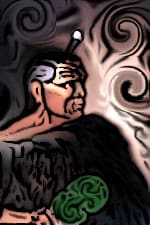
Kupe
An impression of Kupe.
[/vc_column_text][/vc_column][vc_column width=”1/3″][vc_column_text]
Kupe is named as the Polynesian discoverer of New Zealand, about the middle of the tenth century. Legend has it that Kupe was a fisherman and navigator from the island of Raiatea, near Tahiti. While chasing a giant octopus that had been stealing their bait, Kupe, his wife and other fisherman travelled far past the setting sun.
As they voyaged southwest Kupe encountered a ‘great southern land with high hills covered with mist uninhabited except by birds’.
Kupe’s wife Hine-te-Aparangi who on sighting land said “He ao, he aotea, he Aotearoa”, it is a cloud, a white cloud, a long white cloud becoming Aotearoa “Land of the long white cloud”.
[/vc_column_text][/vc_column][vc_column width=”1/3″][vc_column_text]
Maori Great Migration
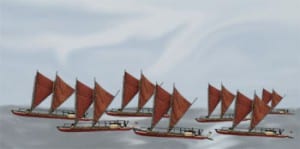 After Kupe had slain Te Wheke o Muturangi (Muturangi’s giant Octopus), he explored “Aotearoa” and then returned to his homeland. Centuries later following Kupes’ navigational instructions, a great migration of people from Kupe’s homeland, sailed to New Zealand in waka hourua (voyaging canoes) to become the Tangata Whenua “People of the land” of “Aotearoa” .
After Kupe had slain Te Wheke o Muturangi (Muturangi’s giant Octopus), he explored “Aotearoa” and then returned to his homeland. Centuries later following Kupes’ navigational instructions, a great migration of people from Kupe’s homeland, sailed to New Zealand in waka hourua (voyaging canoes) to become the Tangata Whenua “People of the land” of “Aotearoa” .[/vc_column_text][/vc_column][/vc_row][vc_row][vc_column][vc_column_text]
European Discovery
Abel Janszoon Tasman
In the era ‘The Age of Discovery’ is a time which European ships travelled around the world to search for new trading routes, and partners to feed maritime commerce and naval supremacy. In the 17th century Europeans were convinced of the existence of a Terra Australia Incognita an unknown southern land.
[/vc_column_text][/vc_column][/vc_row][vc_row][vc_column width=”1/3″][vc_column_text]
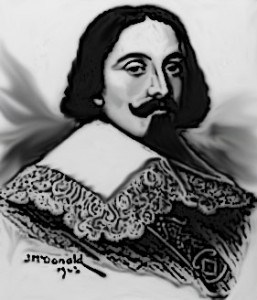
Abel Tasman
[/vc_column_text][/vc_column][vc_column width=”1/3″][vc_column_text]
Dutchman Abel Tasman was sent to find this new continent, so the Dutch could dominate any future trade with this new continent. Instead on the 13th December 1642 in the vessels Heemskerck and Zeehaen, Tasman and his crew sighted a ‘land uplifted high’. ‘This land uplifted high’ being the west coast of the South Island, where five days later they anchored in Golden Bay. This sighting made Tasman and his crew the first Europeans to discover New Zealand, which he named Staten Landt later to be renamed Nieuw Zeeland by a Dutch cartographer.
[/vc_column_text][/vc_column][vc_column width=”1/3″][vc_column_text]
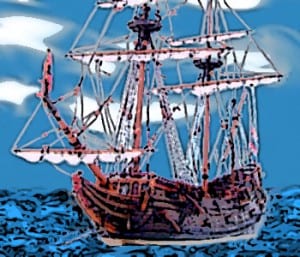
Abel Tasmans’ Heemskerck
[/vc_column_text][/vc_column][/vc_row][vc_row][vc_column][vc_column_text]
Captain James Cook
[/vc_column_text][/vc_column][/vc_row][vc_row][vc_column width=”1/3″][vc_column_text]
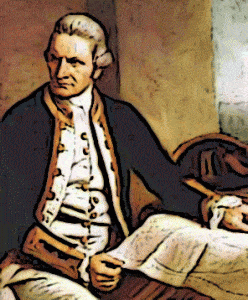
Captain James Cook
[/vc_column_text][/vc_column][vc_column width=”1/3″][vc_column_text]
James Cook’s vessel on this 1769 voyage was the Endeavour, and the crew of 85 men was made up of sailors, marines, artists, and natural scientists. Two important people to Cook’s successful voyage were the Tahitian Tupaia and naturalist Joseph Banks. Tupaia was born on Raiatea and knew the legend Kupe’s “island of birds”, although well travelled in eastern Polynesia had not journeyed this far south. Cook brought Tupaia as a guide and interpreter. Tupaia looked like a Māori and spoke a language which they could understand. He informed Māori that beyond the seas the existing world was made up of other Polynesians, plus other races, cultures with technologies that differed from their own isolated world.
[/vc_column_text][/vc_column][vc_column width=”1/3″][vc_column_text]
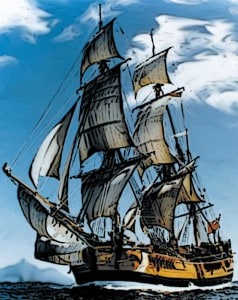
The Endeavour
[/vc_column_text][/vc_column][/vc_row][vc_row][vc_column][vc_column_text]
Cook and Banks discovered that the Tahitian and Māori languages shared many words. Cook recognized the relationship of Māori culture to that of the Tahitians and realised the two cultures must share the same source of origin. With Banks and the ships artists, Cook documented the language and material culture of Māori in the 1700s. The pool of knowledge which Cook gathered on his visits to New Zealand would serve the historic, scientific, anthropology worlds for decades.
Cooks reports to London on the natural resources of New Zealand led to the creation of industries especially in the flax, timber, sealing, and whaling of the 1700s and 1800s. Through the three visits to New Zealand cultural changes in the day to day lives of Māori began. This came about through the introduction of metals, diseases from sexual and social encounters, vegetables which would play an important part in Māori diet and economy especially potato and turnips, European firepower (cannons and muskets), animals (pig, chicken, goat).
Cook proved New Zealand was a set of islands, but there still remained talk of that Southern Continent. His second voyage aboard the Resolution (1772-75), he crossed the Antarctic Circle finally proving the non-existence of the Southern Continent. While on this journey he successfully tested a copy of Harrison’s chronometer, the mechanical device that enabled mariners to accurately chart longitude for the first time.
James Cook’s cartographical skills of mapping and charting New Zealand were a remarkable achievement, throwing new light on the Pacific and New Zealand especially. He carried out an amazing survey of the Pacific; including Easter Island, the Marquesas, Tahiti, Nuie, Tonga, New Hebrides, New Caledonia and Norfolk Island. He is commonly looked upon as the greatest European sea explorer of all time, and when Cook made his voyages to the Pacific, ships were routinely lost around the English Coast.
Cook is a hero in his native Britain as well as New Zealand and Australia today as when he was making his voyages. In New Zealand his given place names have been retained more than any other European navigator or explorer. New Zealand’s highest peak and the ocean strait separating the two main islands, carry his name. There are countless schools, streets, hotels, coin, suburbs, and lesser landmarks that bear his name, features or ship the Endeavour.
[/vc_column_text][/vc_column][/vc_row][vc_row][vc_column][vc_column_text]
Sealing and Whaling
Sealing
Trading in seal furs had long been a lucrative world wide business, and the killing of seals can be dated back early sixteenth century. Through the seal numbers being depleted through hunting in Canada and South America the trading companies turned their attention to New Zealand and Australia.
James Cook’s reporting of large numbers of seals in the Southern South Island, brought gangs of sealers, and supply ships to find this prey. In 1792 an Australian-based gang was dropped off in Dusky Sound by the vessel Britannia thus beginning the first European industry in New Zealand, a mere two decades after Cooks first visit. Other sealing gangs followed in this same area, 1795, 1801, and 1803,and dozens more on that coast and into Foveaux Strait and around Stewart Island between 1803 and 1810.
[/vc_column_text][/vc_column][/vc_row][vc_row][vc_column width=”1/2″][vc_column_text]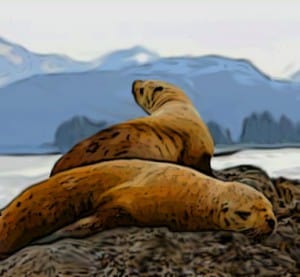 [/vc_column_text][/vc_column][vc_column width=”1/2″][vc_column_text]
[/vc_column_text][/vc_column][vc_column width=”1/2″][vc_column_text]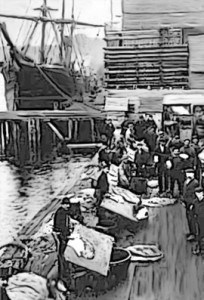 [/vc_column_text][/vc_column][/vc_row][vc_row][vc_column][vc_column_text]
[/vc_column_text][/vc_column][/vc_row][vc_row][vc_column][vc_column_text]
The sealers were subjected to severe conditions. The gangs would often be dropped on inhospitable coastlines with minimal supplies, and expected to fend for themselves for months at a time. Besides killing and flensing seals, and treating the skins they were expected to hunt for game and fish to supplement their supplies by living off the land. If they remained long enough in one place they would try and grow vegetables, but usually the land was poor and exposed.
The deep south of New Zealand became first for many events for European New Zealand. The first shipwreck, first shipyard, first European house and the largest European settlement until the 1830s. These firsts came about from the sealers left by the Britannia building a European style house and a two masted cutter in case they had to evacuate themselves. But the Britannia returned 10 months later and the cutter was left unfinished in its cradle. In 1795 the supply ship Endeavour limped into Dusky Sound in a very unseaworthy condition. They were to refit and to complete the cutter left behind by the Britannia’s sealers, but their stay became longer when the Endeavour fell apart stranding 244 people. Most of the crew got away the following year after making the cutter seaworthy, and converting the Endeavours longboat.
Whaling
Commercial whaling in New Zealand came about from the depletion of certain species in the North Atlantic, through uncontrolled slaughter. From the detailed reports of Captain James Cook about the abundant resource of whales in New Zealand waters, saw the arrival of the first commercial whaling ships in 1792. The major powers of the northern hemisphere were turning to the relatively untouched South Pacific for their whaling needs.
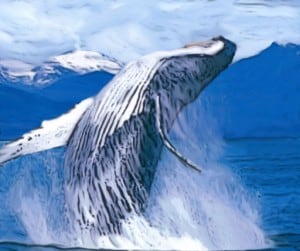
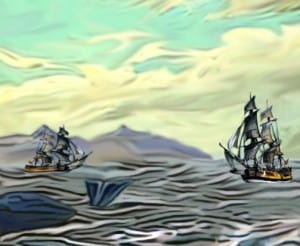
The whales passed New Zealand on their migration from the Antarctic to the Pacific. With their arrival on the West Coast of New Zealand in early May they headed past Kapiti Island and the mainland, to pass through Cook Strait for Picton and Kaikoura to Cloudy Bay. During June the whales continue south towards Foveaux Strait, where they turned northeast heading for the Chatham Islands and the Pacific during the month of May.
Whaling was conducted in two ways, ocean (pelagic) and shore whaling. The first whaling to be introduced was ocean whaling, beginning in the 1790s and the species targeted were the Sperm and Humpback whales. Shore whaling involved mainly the Southern Right whale, and was centred around the east coast of both main islands.
Whaling had far reaching effects on New Zealand with intensive interaction between Maori and European. These ocean-going vessels needed ports near the whaling grounds to service the ships. The ships at first were British, but grew to include American, French, Dutch, Portuguese, Danish, and German.
Returning to shore to stock up for food, water and timber, the crews were looking for alcohol and women. One of these shore stops was the settlement of Kororareka in the Bay Of Islands. The 1830s, this port would have 30 ships in harbour, with 1000 men aboard ship and 300 of these men would be ashore looking for entertainment. Hotels provided alcohol and entertainment and through this start of New Zealand’s sex industry. Women were offered as prostitutes by Maori they were usually of low caste and provided by the chiefs. Maori also grew vegetables and raised pigs for sale and barter to the Europeans.
Māori men also worked on board whaling earning money and visiting foreign countries. As crewmen they were valued for their seamanship, physical strength and were well thought of. Māori often worked together, working their way up the ranks to achieve positions of harpooners and even as officers. Through 1820s to 1840s hundreds of Māori men were serving on whaling ships in the Pacific and they became a common sight in Sydney.
[/vc_column_text][/vc_column][/vc_row][vc_row][vc_column][vc_column_text]
Missionaries
The transplanting of Christianity began with nineteenth century missionary activity. Christianity was brought to New Zealand from the convict settlement of Sydney.
Māori had always been a highly spiritual people believing in the spiritual powers in nature. Religious practices and worship were an important part of their lives. Religious experience and outlook of Māori was there long before the first Christian missionaries arrived in New Zealand. Through Māori cosmology it made Māori more aware to accept the belief in one god.
The first Christian missionary to New Zealand was Samuel Marsden in 1814 on behalf of the Church of England’s Church Missionary Society (CMS). Marsden was a Yorkshire man who was both a Chaplin and magistrate to the New South Wales penal settlement. He was known as the ‘Flogging Parson’ in his dealing with convicts, and having them flogged as punishments for their indiscretions.
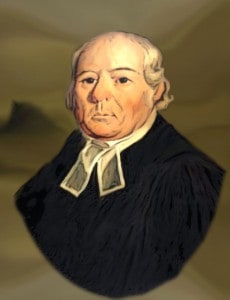
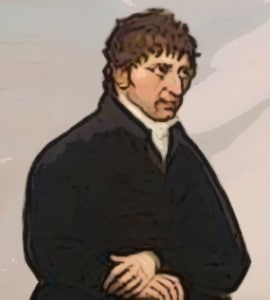
Marsden rescued a Māori Ruatara, by taking him back to Sydney with after he became stranded in London. It was through this association and having contact with the increasing number of Māori in Sydney in the early 1800s, which led to the first CMS mission in the Bay of Islands in 1814.
Marsden arrived by ship in the Bay of Islands accompanied by three families headed by Thomas Kendall, William Hall, and John King, who were all lay preachers. By Christmas day 1814 a missionary station had been set up and Marsden preached the first sermon to the gathered. A year later in 1815, Marsden visited Omapere and Waimate, making the first significant journey and inland exploration European and was to set the pattern for missionaries to follow. He believed that Māori had to be civilized like the European, and had to learn to read and write, learn about horticulture, agriculture, and European manners and morals. Then they would be ready for the Christian word.
Thomas Kendall produced the very first Māori grammar book and the earliest written form of the native language. So now Māori had the means to read and write for the first time in their native tongue. But later Thomas Kendall was sacked for trading guns with Māori Men and adultery with Māori women.
The arrival of Reverend Henry Williams as the new leader in 1823 brought a stronger direction and discipline to the movement. Immediately Williams, his wife and eleven children set about learning the Māori language to proficiency, so they could preach the gospel in Māori. In doing this they translated the scriptures into Māori, and were able to begin to educate the children and adults in their own language.
With the arrival of Williams, CMS achieved more order internally. He dropped Marsden’s civilization policy, instructed all lay ministers learn the Māori language and preach the gospel in Māori. Williams prohibited further missionary involvement in the musket trade, and to become independent and less reliant on Māori. By 1829 several Māori men had been baptized, and over the next decade there were over 3000 Māori Christian in the region. Missionaries were now more numerous in number, more confident, and more fluent in Māori ways.
[/vc_column_text][/vc_column][/vc_row][vc_row][vc_column width=”1/2″][vc_column_text]
Treaty of Waitangi
On 6th February, 1840, in Waitangi, Governor William Hobson representing the British Crown put his signature to a document signed by 40 Māori Chiefs. In essence, this document known as the Treaty of Waitangi ceded sovereignty of New Zealand from Māori to the Queen of England. In return, the rights of Māori to their land, forest and fisheries would remain undisturbed and Māori would enjoy the on-going protection of the Crown. The Treaty exists today as a living document and has, in recent years, acquired increasing importance in the development of the nation’s social and economic policies.
Woman Given Vote
In 1893 New Zealand became the first country in the world to grant women the vote.
Ernest Rutherford
In 1908 New Zealand born Ernest Rutherford awarded Nobel Prize in Physics for splitting the atom.
[/vc_column_text][/vc_column][vc_column width=”1/2″][vc_column_text]
A.N.Z.A.C Day
On April 25th, 1915, during WW1, thousands of New Zealand and Australian troops stormed the beach of Gallipoli in Turkey. This day is commemorated every year to all who served and returned from the conflict.
Independence Day
In 1947 New Zealand gains full independence from Britain.
Capital Punishment
In 1961 Capital Punishment was abolished in New Zealand.
Anti – Nuclear
In 1985 anti-nuclear policy was introduced banning nuclear armed or powered ships from New Zealand waters. French secret service agents bombed Greenpeace’s Rainbow Warrior in Auckland Harbour.
[/vc_column_text][/vc_column][/vc_row]
